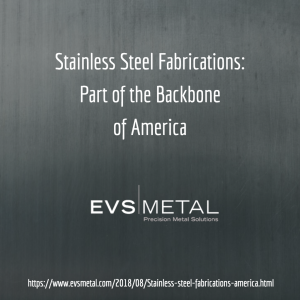 Stainless steel is used in an enormous variety of products and has an incredible number of applications. Yet, for all of its ubiquity, stainless steel isn’t a well-understood metal outside of metal manufacturing circles.
Stainless steel is used in an enormous variety of products and has an incredible number of applications. Yet, for all of its ubiquity, stainless steel isn’t a well-understood metal outside of metal manufacturing circles.
What is stainless steel?
Stainless steel is an iron alloy, meaning it is made up of at least two different chemical elements. It contains a large percentage of chromium — 12-20% of the total alloy, which makes it extremely resistant to rust and stains. It is usually divided into five different types, based on its content and microstructure:
- Ferritic: These are magnetic steels based on chromium with small amounts of carbon (usually less than 0.10%).
- Austenitic: Non-magnetic steels that are also the most common. Their microstructure is derived from the addition of nickel, manganese and nitrogen.
- Martensitic: Magnetic and similar to chromium-heavy ferritic steels but with higher carbon levels (up to 1%).
- Duplex: Moderately magnetic with a microstructure of approximately 50% ferritic and 50% austenitic, making them exceptionally strong.
- Precipitation Hardening (PH): Magnetic and very strong steels that gain their strength from the addition of elements such as copper, niobium and aluminum.
How are stainless steel products made?
Producing stainless steel end products is practically a science unto itself, one that requires multiple types of technology and processes.
- Melting and Casting: The raw materials are melted in an industrial electric furnace for between 8-12 hours then cast into various semi-formed shapes, including slabs and rods.
- Forming: The semi-formed stainless steel pieces “rolled” and converted to more workable shapes, such as stainless steel bars, plates or sheets.
- Heat Treatment (Annealing): The metal is heated and cooled in a highly-controlled environment in order to soften the material and make it more workable.
- Descaling/Pickling: Heat treatment often results in tightly-adhering oxide films, so removal of heavy, tightly adhering oxide films can be necessary at this stage.
- Fabrication: Where EVS Metal enters the process. The larger pieces of stainless steel are cut, bent or otherwise formed into precise end pieces.
- Finishing: Completed for both aesthetic and functional reasons, depending on the item’s end use. It can be used to give stainless steel a range of looks from a 1D “rough” mill finish to a highly reflective #8 mirror finish
Interested in learning more about EVS’s stainless steel fabrication capabilities for your next metal fab project? Get an online quote, or call 1-888-9EVSMet.





